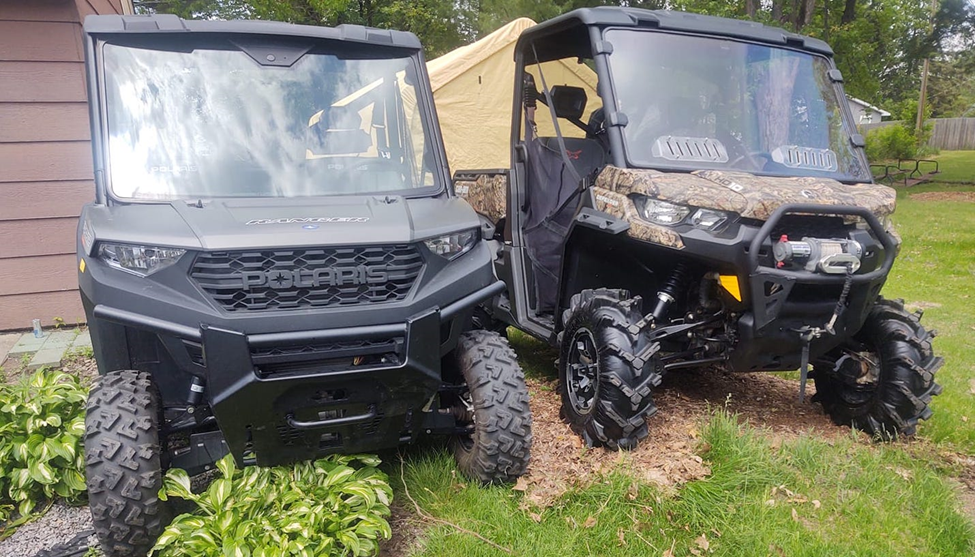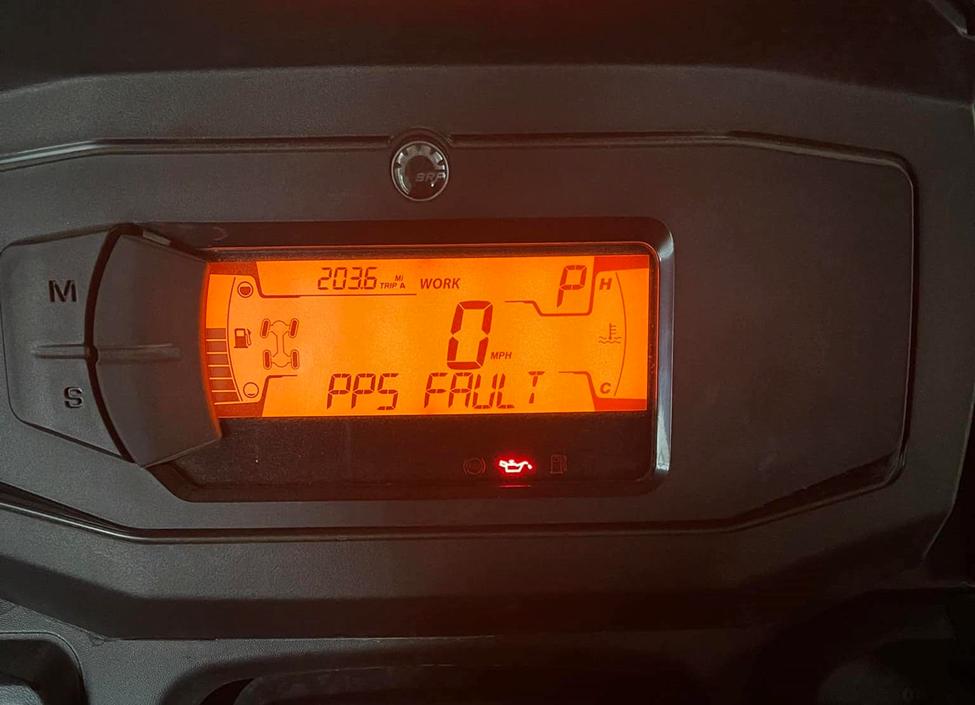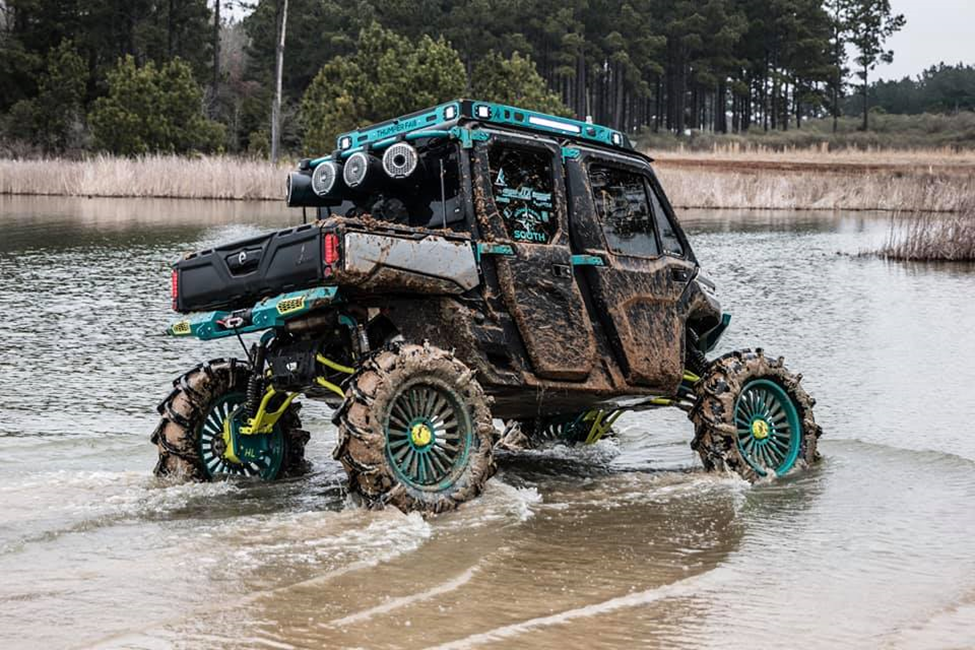10 Frequently Asked Questions About the Can-am Defender
May 15th 2023
Question 1: What is better, a Can-Am Defender or a Polaris Ranger?

Answer 1: Both the Polaris Ranger and the Can-Am Defender have their pros and cons, but the differences between them are minor, and oftentimes come down to personal preferences on creature comforts. Each lineup constitutes multiple vehicles, and you can’t compare a high-end line to a base model, nor can you compare a recent machine to an older version. On the whole, however, the Defender seems a bit more peppy than the Ranger, and it has a little more leg room and cab room in general. A Ranger, on the other hand, has more standard storage, and holds gravel roads better on turns.
Many riders prefer the sound of the Defender's V-Twin engine, but you can get Ride Command in a Ranger, and the factory cabs on the Ranger are tighter and seal better than the factory Defender cabs. When you begin to “send it” or convert your UTV into a swamp buggy with massive tires, lift kits, etc., you’ll start to encounter problems with any brand. But if you don’t have a preference on the aesthetic side of things, and don’t mind adding aftermarket accessories to fill in the gaps, it could boil down to going with the manufacturer with the best dealer support in your area.
Question 2: Where is the fuse box on a Can-Am Defender?
Answer 2: The 40 Amp fuse that provides power to the front roof harness is located under the hood. The other fuses in a Can-Am Defender are by the battery under the passenger seat. On the Defender MAX, there’s also a 10 Amp fuse on the secondary panel under the back seat.
Question 3: Are Can-Am Defenders reliable?
Answer 3: The reliability of any UTV will depend on how it’s driven, the modifications made to it, and the maintenance activities that are conducted. As either a bone-stock work rig or a mild trail runner, the Defender is bulletproof. But if you start using it like an airplane, a boat, or a submarine, you’ll begin to encounter problems eventually. If you ask around or read online forums, you’ll always hear horror stories from the owners with issues. However the thousands of riders that love their machines have little impetus to brag about how well their machine is holding up. Folks don’t usually ask for help when everything is going right.
The bottom line is that Defenders are quite reliable, and most of the issues experienced by owners stem from modifications or riding styles that put the vehicle way outside its design specs. Throttle control is one thing, and knowing when you can and cannot gun-it is another. With proper maintenance and a little common sense behind the wheel, the Can-Am Defender is sufficiently reliable for almost every off-road situation!
Question 4: What is a PPS Fault on a Can-Am Defender?

Answer 4: A PPS Fault on the Can-Am Defender stands for pedal position sensor fault. Although it can be triggered by a faulty pedal position or an issue with the gas pedal assembly (as Defenders have electronically controlled throttle bodies with sensors on the gas pedals), it’s mostly caused by a bad battery or faulty battery connections. The Defender hates low voltage, so if your rig throws a PPS fault, check the battery voltage to ensure that the voltage regulator is working. If you have any auxiliary equipment hooked directly to your battery, this could cause it to become depleted and lose voltage. While you can hook the battery to a trickle charger, your best bet might be to ditch the factory battery completely and upgrade it with literally anything else – XS Power batteries and Optima batteries are both used and loved by many riders.
Question 5: Where is the oil filter on a Can-Am Defender?
Answer 5: The oil filter in a Can-Am Defender is inside the engine, and notoriously difficult to access, remove, and change. Pulling the pin and tilting the bead all the way will help you reach it, and packing a couple shop rags under the engine to catch any oil that comes out with the filter makes things cleaner, as the rear skid plate cannot be removed. Pulling the pin might be useless, though, if you’ve got big tires and / or a bumper, and if you own a Limited Defender with AC, the lines for that will be in the way, so it might be easier to pull the passenger seat and access the oil filter through the cover underneath. To make it easier to change your oil filter in the future, companies like Mr. RPM make oil filter relocation kits for the Can-Am Defender that extend the lines and reposition the filter.
Question 6: What bolt pattern is a Can-Am Defender?
Answer 6: The factory bolt pattern on Can-Am Defender wheels is 4/137.
Question 7: Are Can-Am Defenders any good?
Answer 7: The quality and endurance of Can-Am Defenders are nearly unrivaled, and they’re great vehicles for both work and play. Every side-by-side has its quirks, but if you’re not looking for anything sporty or outrageously fast, the Defender will suit you well.
For mud, you’ve got the Defender XMR, and for trails, you’ve got the Defender XT editions. If you ride with a large party, you’ll want a 4-door Defender MAX, and for large loads, a 6x6 Defender is the way to go. See this post of ours to learn more about the pros and cons of both the Can-Am Defender and the Can-Am Maverick!
Question 8: What extra features do you get with a Can-Am Defender Limited Edition?

Answer 8: The most salient features that come stock on a Can-Am Defender Limited are full cabs, HVAC climate control systems (heat and A/C), and an extra two inches of front-end suspension on the 2023 Defender Limited. Like the XMR, the Limited also has better seats than the base model Defender, but they’re pretty pricey, and out of the question for riders with strict budgets. So a great alternative to popping on a high-end model like the Limited is to get a cheaper edition and put a few grand into the aftermarket accessories you think you'll want (which could include a cab enclosure and a heater).
Question 9: Where is the air filter on the Can-Am Defender?
Answer 9: The cabin air filter on Limited Can-Am Defender models is under the hood, while the engine air filter for the Can-Am Defender is located inside the airbox below the bed behind the passenger-side seat.
Question 10: What coolant do you use in a Can-Am Defender?
Answer 10: Can-Am has their coolant recommendations in the owner’s manual, and if your UTV is still under warranty, it’s prudent to spend the extra money to add exactly what the manual calls for – lest you cause issues with the stator, the water pump, or the 4cyl aluminum radiators. Many riders will tell you to match the color of your coolant, but this isn’t important as long as they’re the same type of antifreeze. Certain types of coolant mixing can, however, cause gelling, but this has nothing to do with colors. Per the manual, the Can-Am Defender takes a 50/50 mix of ethylene glycol long life antifreeze designed for aluminum engines, so make sure to avoid anything with dexcool.



